The Musical Kaleidoscope Story
by Don Robertson
The Archiving Project
By the year 2003, we had so many records in our record collection that it had become difficult to manage in our Georgia home. My wife Mary Ellen Bickford and I were preparing for a move to Nashville and the collection was going to be too large to fit into our home there. Instead, we packed it into a large U-Haul truck, and my daughters drove it to Colorado to be stored in a large climate-controlled room in my mother’s basement. It remained there until 2007 when we brought it to Nashville to began the process of transferring the recordings to digital format for use in the Musical Kaleidoscope project.
Don Robertson
The House
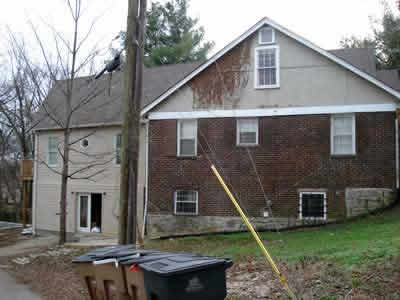
In April, 2007, we leased the rear portion of this Nashville home. Inside, we created an office and a recording studio. It was in this location that we digitized our library of recordings.
The Office
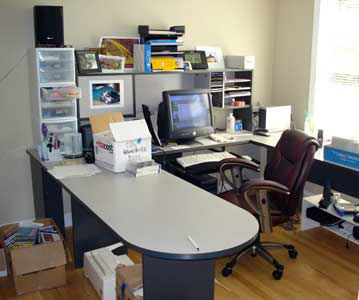
This was our office, the room where albums, records and tapes were sorted and catalogued. We hired our friend Lydia Wheeler to help us with this work.
The Studio
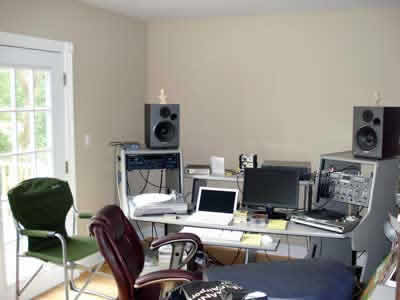
Our friend Wave Baker moved to Nashville for a year to work as our recording engineer for the Musical Kaleidoscope archival project. Wave sat in this studio 12 to 14 hours a day managing a multiple recording process that involved 3 turntables directly connected to 3 computers, while a professional cassette player ran simultaneously. As the turntables spun, CDs were being ripped and 78 records and album covers were being photographed. Mary Ellen built a stand that was mounted with a tripod and lights for photographing records and album covers.
The Hallowed Halls
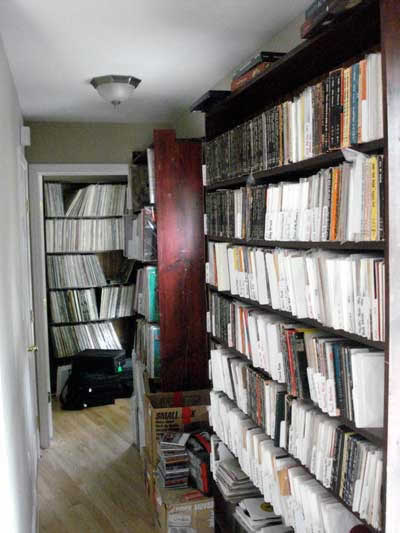
All available wall space was used for shelves. On the right is our 45rpm record collection. Beyond it are some of our LP record albums. The top five shelves of the 45rpm record collection contain rare recordings from the early 1950s. The bottom shelf holds rare gospel records.
The 78rpm Record Collection
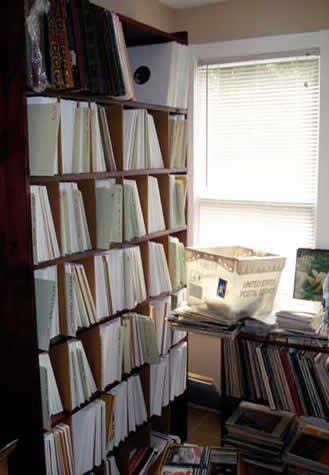
This is one of two specially built 78rpm record shelves. They sat opposite each other in a nook near the front door. Each record had been cleaned and stored in a collector’s envelope inside of a plastic sleeve and was then placed into a cardboard holder. The bulk of the 78rpm record collection consists of gospel records recorded between the 1905 and 1954.
Sorting Cassette Tapes
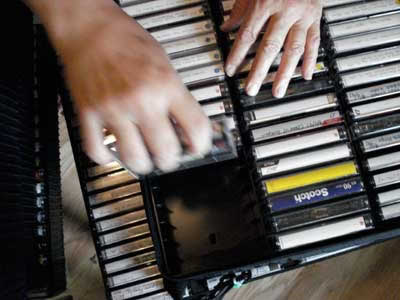
There were thousands of cassette tapes to sort. All of the tapes that needed to be digitized were loaded alphabetically into cassette racks that were stacked in the studio for Wave to draw from. The cassette player ran from 12 to 16 hours a day. The cassette collection consisted of transfers that I had made during the 1970s and 1980s of recordings borrowed from other collections. Also, I had amassed a rather large number of pre-recorded cassettes of music that I was unable to find on records. These were mostly rare recordings of gospel music and Indian classical music. We also transferred our collection of VHS tapes of live music events to computer.
Thousands of Cassette Tapes
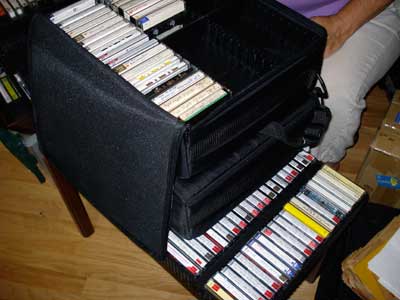
We had to identify and sort tapes from 13 cloth cassette cases that each contained 120 tapes. Additionally, we had at least twice that many wall-mount racks filled with tapes. I do not believe that we realized the quantity of tapes that we had collected until the sorting process began!
Two Turntables in Action
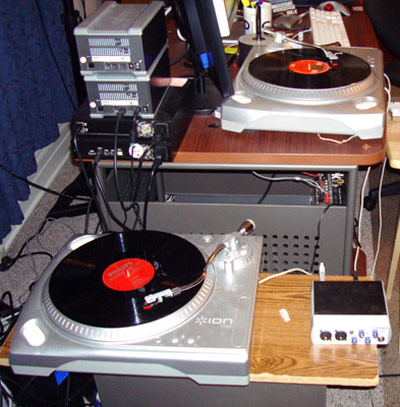
These two 33rpm/45rpm record turntables connected directly to the computer via its USB ports. A stack of disk drives held the computerized recordings that had been recorded from the turntables.
Thousands of CDs
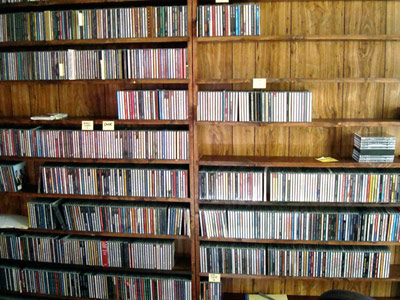
Here we see two of the three CD shelves that at one time had been completely filled with CDs. I had already ripped most of the CDs during the two years previous to the archiving project, bringing batches of CDs back to Nashville on various trips to Colorado. When CD processing had been completed, the CDs were either sold, or packed and returned to storage.
African American Gospel Music
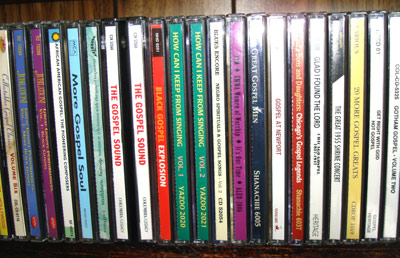
Here we see only a few of the many CDs containing reissues of African American gospel music that had been transferred commercially from 78s and master tapes. These commercial CDs were an important source of recordings of rare records that would have been difficult to find otherwise.
North Indian Classical Music
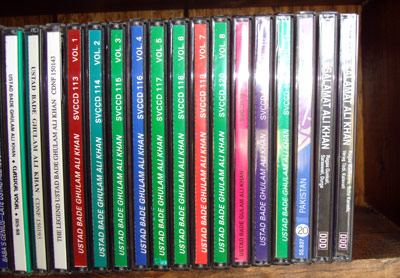
These are CDs of rare recordings from India. This music had been previously issued on records, or was from the vaults of sources such as All India Radio.
78rpm Record Albums
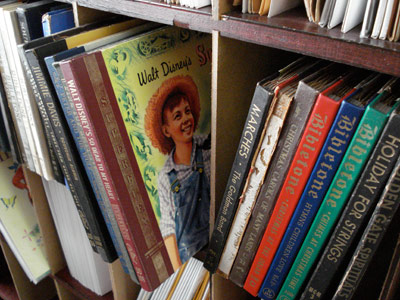
Pictured here are American 78rpm record albums from the 1940s and 1950s. Each album contains multiple 78 records. Most are in mint condition.
Early 45 rpm Record Albums
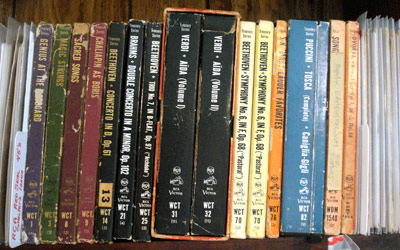
When RCA Victor released the first 7″ 45s in 1949, the company attempted to compete with Columbia Records for possession of the classical music market. Columbia had invented the 33-1/3rpm LP record in 1948. It was the superior format for classical music. Thus, that market was won by Columbia. During this period of competition, RCA Victor released classical music as box-set albums of 45rpm, red-vinyl records. In this photo we see some of these classical music albums that had been released on RCA Victor during the early years of 45rpm records. Note the size of some of the opera sets (Tosca and Aida). They contained many individual records, while an LP counterpart on 12″ records would have contained only a few.
Wave
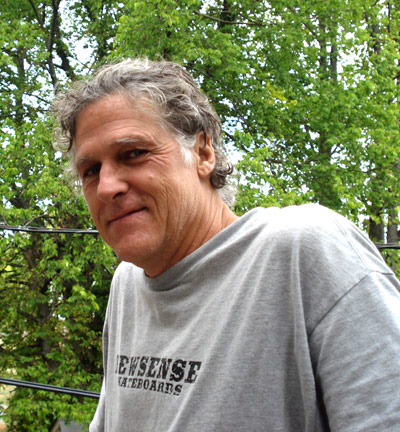
This is Wave Baker, who spent thousands of hours running the turntables, cameras, and computers. He is getting some fresh air on the deck next to the studio. I have yet to find a mistake anywhere in the digitized collection. We are blessed to have a friend like Wave.
Don
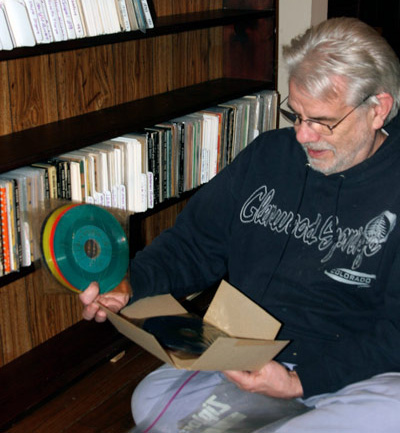
Here am I, looking at a rare set of mint RCA 45s.
Mary Ellen
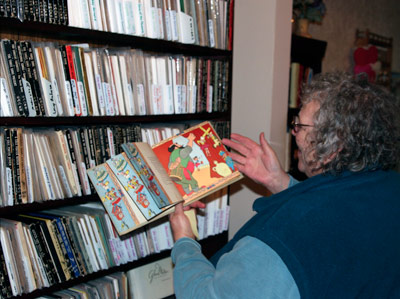
Mary Ellen is looking through one of the early Disney children’s 45rpm record albums from 1950. In addition to various children’s stories, music from the Disney movies was featured along with narration and a colorful story book that kids could read while listening to the records. RCA Victor 45rpm children’s albums contained yellow vinyl records.
Preparing Records for Storage
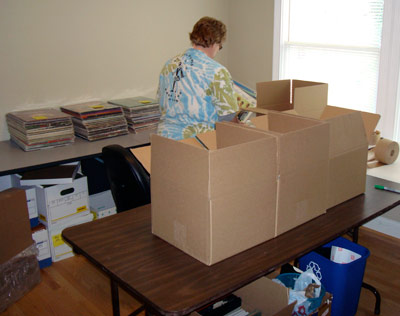
At the end of our year-long archiving project, we began the process of boxing the collection to return it to storage. Cassettes, albums, 78s and CDS were are carefully sorted, labeled and boxed. This is our helper Heidi at work in the office of our leased home.
Cassette Tapes from India
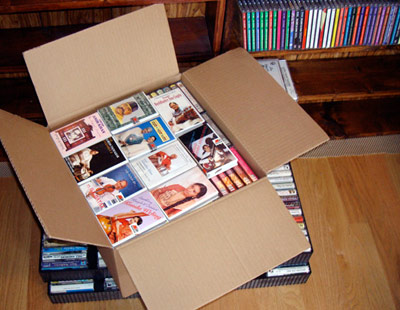
This is one of the boxes. It contains colorful cassettes of classical music recorded in India. Every box headed for storage was numbered with a description of contents printed on the label attached to each box.
Wrapping a Stack of 78s
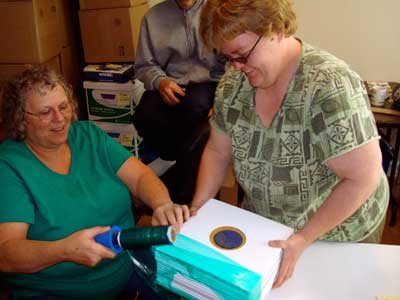
Mary Ellen and Heidi are preparing batches of 78rpm records to be placed into storage cartons. 78rpm records break easily and must be carefully handled when they are being prepared for storage.
Preparing 78s
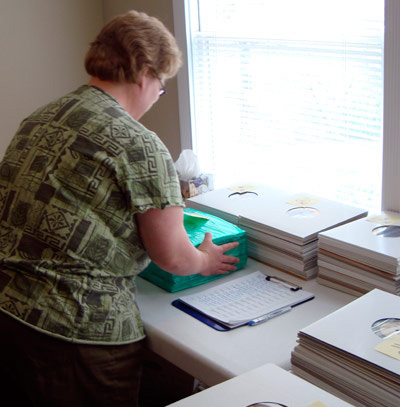
Heidi takes the stack of shrink-wrapped 78s in hand to place it inside of a storage box.
Peanuts
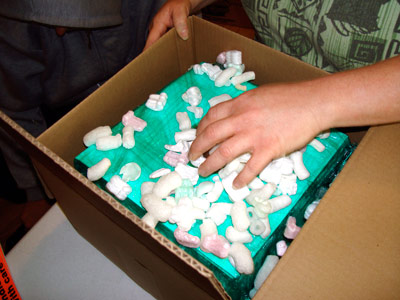
Stacks of 78rpm records were placed inside storage boxes and surrounded with styrofoam pellets.
The Movers
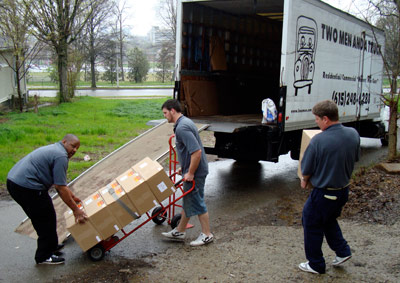
“Two Men and a Truck” helped us move the boxed and labeled record collection to a warehouse where the collection was to be stored.
The Warehouse
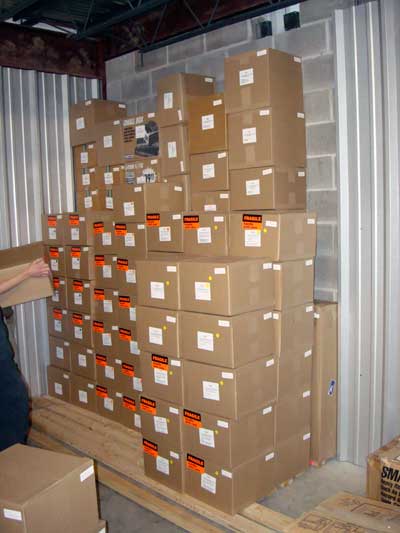
Boxes were transported to, and stacked in, a storage warehouse. Each box has been labeled and numbered, and its contents listed in a master document.
Moving Out
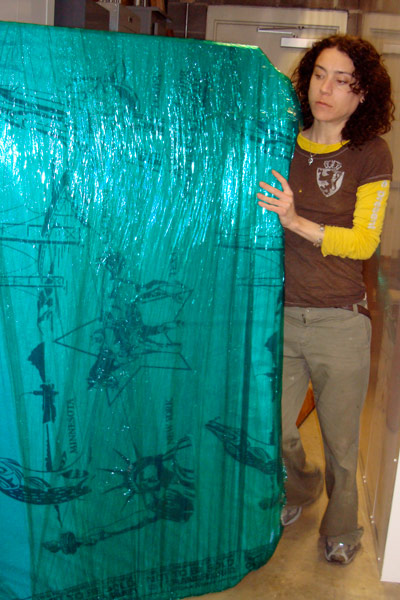
Our one-year lease is nearing its end, and everything must go. Lydia is helping in the moving process. Wave’s quarters, the office, a large sorting room, hallways, and the studio have to be clean and emptied.
Empty Cassette Racks
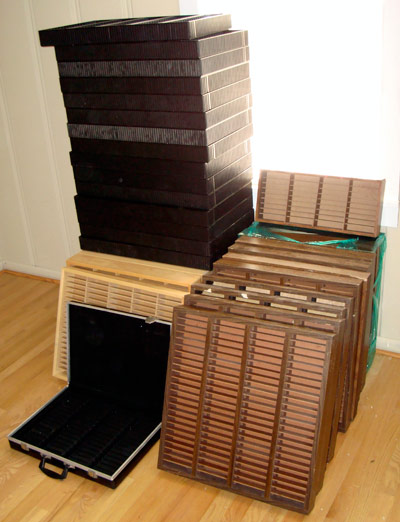
Dozens of wall-mountable cassette racks are now empty, their contents in storage. They will go to our friend Barky for use in his great gospel music store “Barky’s Spirituals” in downtown Richmond, Virginia. He helps keep traditional gospel alive by making available thousands of cassette tapes and CDs. These racks will continue their tradition of “saving the music” in Barky’s store.
"La Fin"
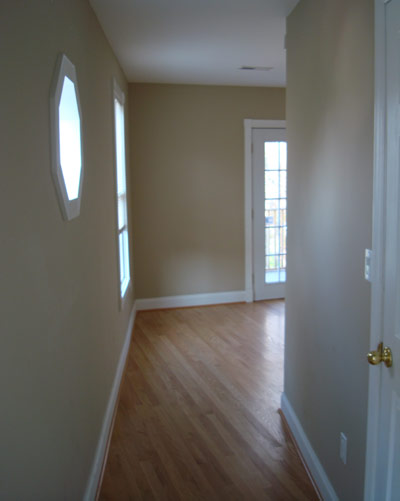
The house is now vacant and ready to turn back over to its owner.
